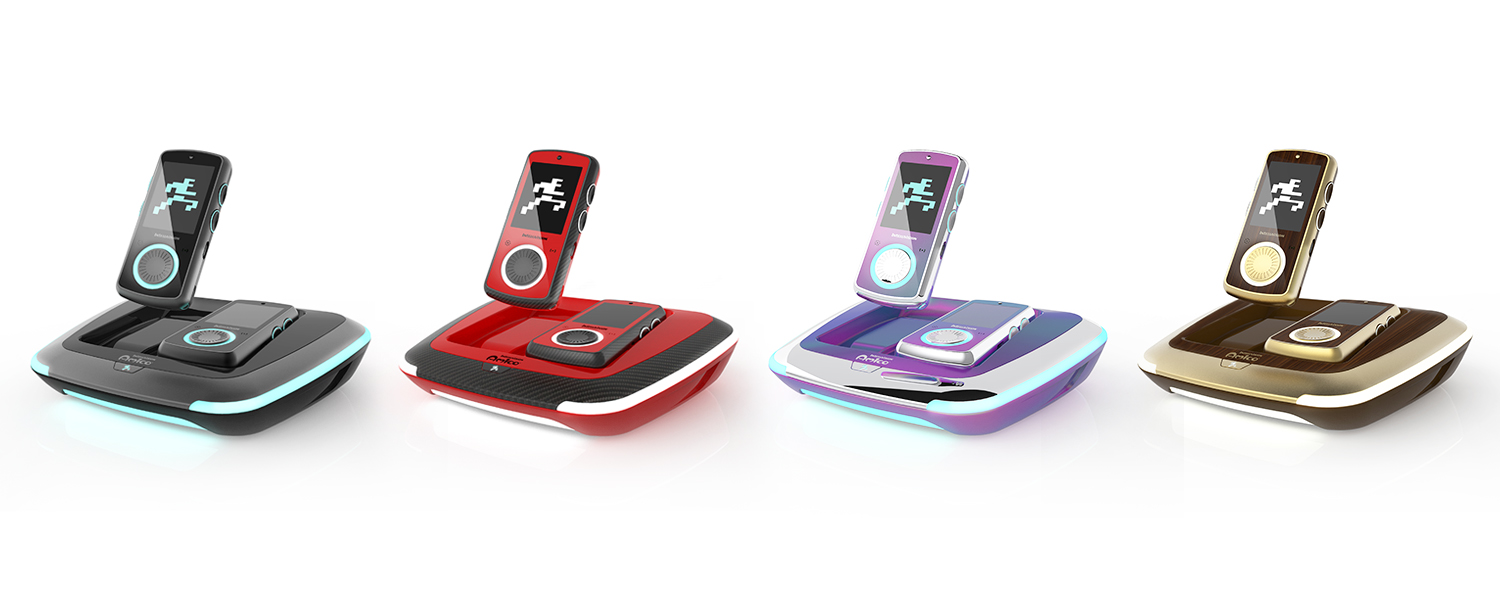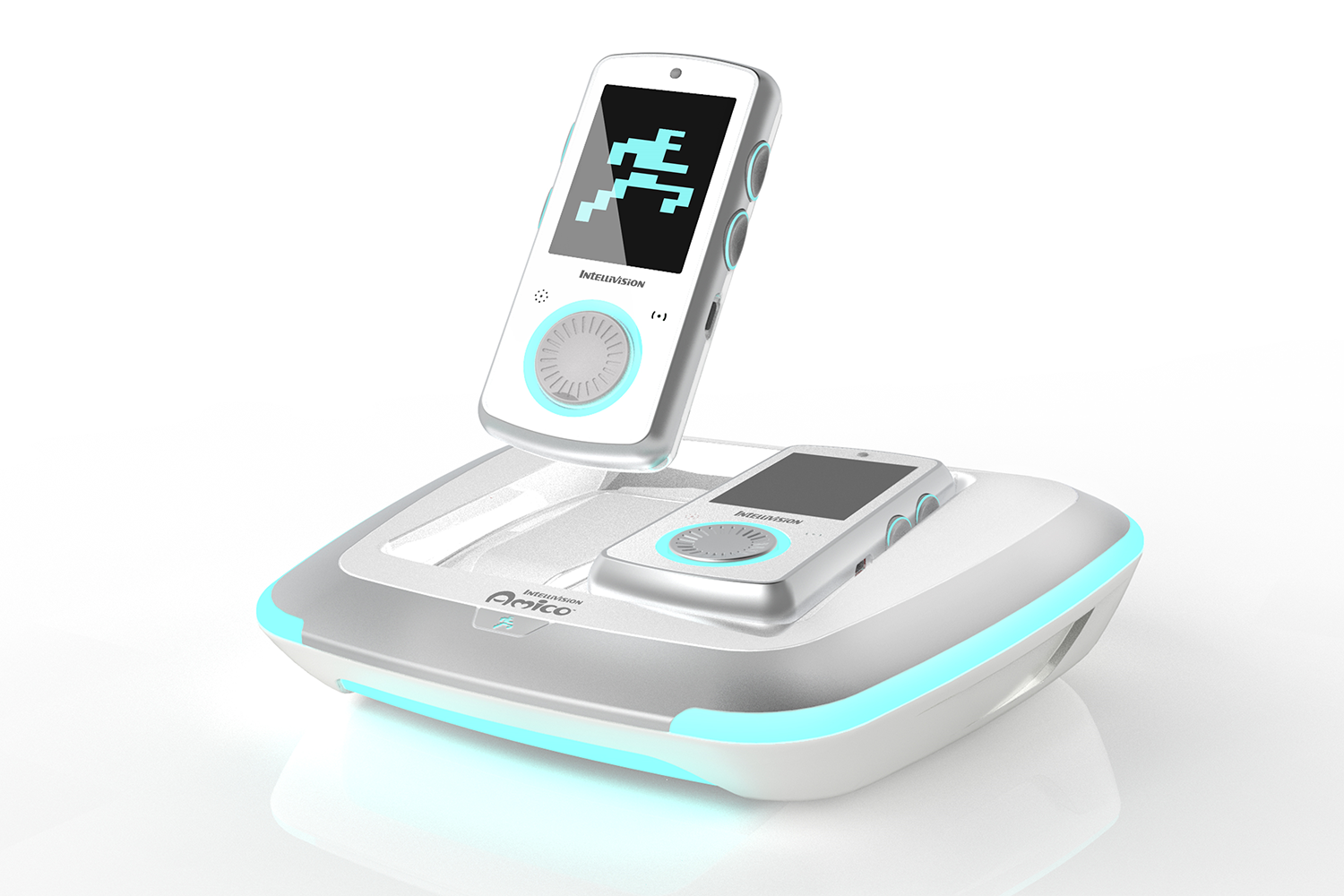Q&A: GAMING INNOVATOR TOMMY TALLARICO
The world is buzzing about the most anticipated gaming system in years, and Design Central is proud to be partnering with its mastermind, Tommy Tallarico, to bring it to life. Intellivision took the nation by storm in the ‘80s, selling millions of units as a more developed system than Atari. Now, Tallarico is going retro, bringing back a reimagined version—Amico—created to bring families together. The Amico, which is slated for a 10.10.20 launch, is a nod to nostalgia and aims to appeal to gaming novices and devotees alike. (You can read more about our work on the Intellivision gaming system here.) Fun fact: Tallarico is also a musician and composer who is creating music for the Amico games. We talked with Tallarico about his vision, inspiration and how he’s redefining what family gaming can be.

Why relaunch this gaming system now?
The Intellivision Amico really is created to bring families and friends back together in the same room playing games. All of the home video game consoles these days really just focus on hardcore gamers. The controls and menus screens have gotten too complicated, not to mention the expense of the devices. And most video game consoles for the last 25 years have only come with one controller. You know, when families play a board game, people are in the room talking together, and there hasn’t really been a video game system that has does something similar in 13 years. The Nintendo Wii did it last, and that was 13 years ago. So we’re kind of picking up where the Wii left off.
What sets it apart from other gaming systems?
There are 200 million hardcore gamers in the world who play home consoles, yet there are three billion people who play mobile and casual games on their phones. It’s those three billion people who haven’t really been targeted for a home video game console in the last 13 years. We’re bringing back those fun and simple sensibilities. When I was growing up in the late ‘70s and early ‘80s, everybody used to play video games. Now it’s become very difficult for casual gamers to play a video game system in their home. None of the games we’re making are in these big 3D worlds that have complicated controls. We’re keeping everything simple. It’s all in 2D or what they call 2.5D, where you’re using 3D characters but it’s on a 2D plane. It’s simplified. The art styles are beautiful, but it’s just not this big 3D world. And the controllers are very unique because each controller has a screen. Giving individual information to each user goes a long way.
How will it be similar to the original Intellivision, and how will it be different?
The fact that families are going to be playing it is really what makes it similar—and the simple design of the games. The other thing is the original disc that we have on the system, which is a 360-degree disc. The fact that you can put the controllers back into the system, that’s pretty unique. But the controllers will self-charge wirelessly, which has never been done before. The graphics and sound are a lot better. And not only are we remaking the classic games, but we’ll be bringing a whole new plethora of experiences that no one has ever seen before. So a lot of sensibilities from our 40-year history are being brought into the 21st century.
How has Design Central helped bring your vision to life?
We’re doing the internal guts of the system in-house, but they take that hardware and they make it aesthetically look great and function great. Not only are they doing the outer design of both the controller and the box itself, but they’re getting all of the mechanical engineering to work. They’re thinking about what the buttons feel like, how the disc works. It’s just been an amazing partnership. And, you know, we’re targeting moms and kids, and they have so much great experience with that. That’s part of why I chose them—because of that experience of bringing products to the home, while still making sure it looks 21st century and aesthetically pleasing. The interfaces are designed sensibly as well. It’s not just the look and aesthetic—it’s the functionality. And they have some gamers there too, which is great. All of that experience has really gone a long way for us.
What is one way the team here has challenged your thinking during the process?
Originally, I was thinking the screen we have on the controller would be a lot bigger and that the disc itself would be a lot bigger. But through discussions, they convinced me that shrinking the size of those would make more sense in the end, and they were right. That was helpful.
What specific team members have you really connected with at Design Central?
You know, my goal was always to make this family friendly. I want moms to feel like it’s approachable, not scary or complicated. But I also want it to have some design sensibility, so people who do play games will be interested and think it’s cool. That’s been our fun challenge, and that’s something that Jeff and Caterina and I go back and forth on a lot. The disc itself, how we’re upgrading the technology and the buttons, is something that Slade has really been on the forefront of on the engineering side. Todd is really the superhero who does a little bit of everything. Every Monday morning, I get the project update from him, and it’s kind of like Christmas. They always exceed my expectations about what I’m going to get and where they are in the project. They’ve worked with me every step of the way to make sure the budget and the timeline were good for us. So both from a creative and a financial standpoint, they’ve really been unbelievable. And the great thing is that with all of these folks, they have as much passion for what we’re doing and the purpose behind it—bringing families together—as we do. That’s the real differentiating factor. Having that as a client is an amazing thing, and it goes a long way.
Interested in learning more about how Design Central can bring your vision to life? Contact [email protected] to get started.
